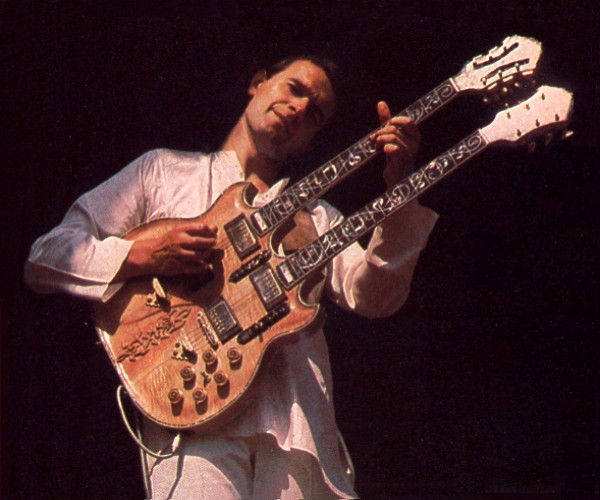DOUG & JEAN CARN / “Naima”
John Coltrane’s “Naima” is a classic of modern jazz. Written for his first wife, the song is a fully developed composition: strong harmonic structure, a gorgeous melody and a closing motif that sets it apart from most compositions which generally conclude with a simple recapitulation of the opening theme. Instead, "Naima" distinctively concludes with a thrice-repeated rising phrase.
This week we offer a dozen interpretations of Coltrane’s classic. We open and close with my two favorite versions.
1. Doug & Jean Carn from Revelation (Black Jazz - 1973)
As far as I am concerned this is it on the refined beauty tip, by which I mean the song I use as the standard for what is beautiful in vocal jazz because: 1. It’s “Naima”—one of the greatest ballads ever written; 2. It’s Jean Carn at the pinnacle of her powers; and, 3. it has a killer arrangement by Doug Carn.
Don’t sleep on any of that triad of reasons. Coltrane made his mark as the most powerful saxophonist of all time, a soloist who completely changed the saxophone game and has yet to be surpassed as an influence on his instrument, but, check this: Coltrane was also the important composer of his generation. Fifty years and some serious revolutions in music later, Coltrane’s compositions continue to be revered. Indeed, new versions of Trane’s signature composition, "A Love Supreme," continue to be released, continue to win awards, continue to challenge musicians. "A Love Supreme" continues unsurpassed.
“Naima” is one of the compositions that forms the corpus of major Coltrane compositions along with “Giant Steps” and the aforementioned "A Love Supreme" (which is actually a suite).
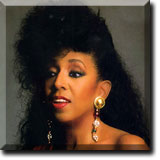
Jean Carn. What can I say? When this was first released, we were mesmerized. Today, over thirty years later, I continue to be profoundly moved by Jean Carn’s recital. While it is impossible not to be impressed by Jean’s voice, the sheer beauty of her notes and breath control, nevertheless, I believe it is a major mistake to overlook Doug Carn’s arranging skills. Rather than have her simply dub in a background, Doug wrote out a counterpoint melody for her to sing and then shadowed the vocals with an electronic keyboard tone that might best be described as a space flute. Awesome. Simply awesome.
2. Dexter Gordon from More Than You Know (SteepleChase - 1975)
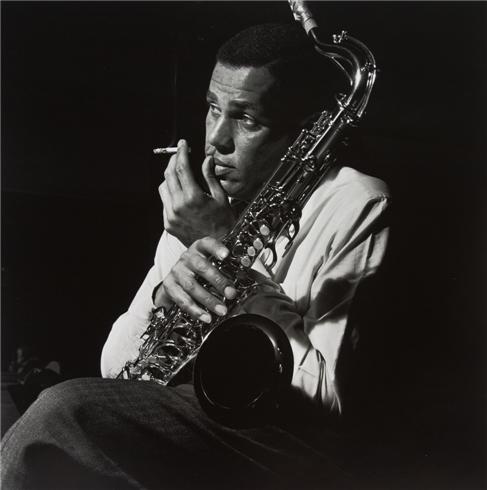
Initially it may not seem like Dex does much on this version but what he does is indubitable: he brings his unique sound to the song, the heft of his few notes anchors the airy arrangement that otherwise might float off into a sort of expressionistic and sentimental orchestral atmosphere. Don’t get me wrong, I really appreciate the work of Paile Mikkeborg who arranged and conducted this classical approach to “Naima.”
You know that the Europeans in general and particularly the Scandinavians were totally committed to appreciating jazz as an artform. This version was not an attempt to dress up Coltrane’s little jazz composition, indeed, it is actually a deep homage to a man revered as one of the greatest of twentieth century musicians. Wouldn’t it be lovely if America’s classical music establishment had accorded Coltrane this level of respect? But then it wouldn’t have been sixties/seventies America.
3. Turtle Island String Quartet from A Love Supreme: The Legacy Of John Coltrane (Telarc - 2007)
The Kronos String Quartet is widely considered the most adventurous of classical string quartets but over the years my ear was and continues to be on Turtle Island (taken from the Native American name for this land). I always thought they swung harder, much harder, than Kronos. It’s no surprise then that in 1985 founder and Turtle Island violinist Dave Balakrishnan would say, “We’re not classical players interpreting Coltrane’s music. We’re all jazz musicians who have spent years listening to and transcribing his solos. Each one of us has done this. So we’re trying to play this in a way that we’re really breathing his breath, but also incorporating these other influences that we feel.”
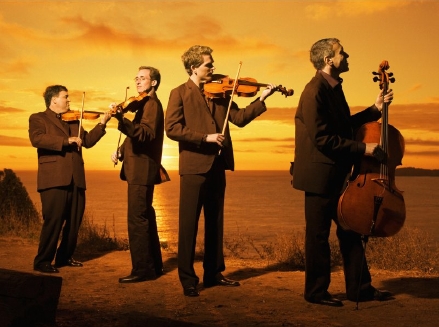
Turtle Island is composed of violinist David Balakrishnan, cellist Mark Summer, violinist Evan Price and violist Mads Tolling. Go here to see/hear a four-minute video discussion about the techniques Turtle Island uses to function as a swinging jazz combo.
Turtle Island's A Love Supreme won a Grammy for Best Classical Crossover Album. And they deserved it. (Yeah, yeah, sometime in the future we will post their version of "A Love Supreme" but for right now we are focusing on “Naima.”) I need only say that the album as a whole is outstanding—you don’t have to love classical music to dig Turtle Island.
4. San Francisco Jazz Collective from SF Jazz Collective, Vol. 2 (Nonesuch – 2006)
SFJC is a repertory jazz band founded and supported by the annual San Francisco Jazz Festival. Each year SFJC features the compositions of a different jazz artist. You know I was all over the Coltrane year. SFJC’s version of “Naima” is a feature for vibist Bobby Hutcherson.
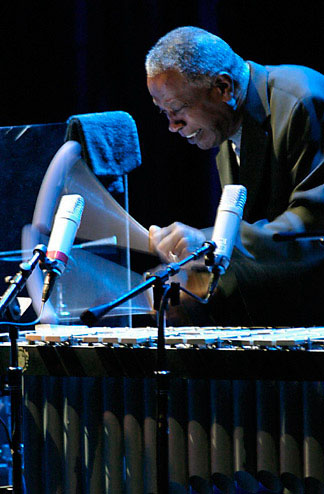
There probably is a musical law against what Bobby Hutcherson does. The vibes are both a percussion instrument and a mellow melodic instrument. Bobby makes use of both qualities at such a high level of technical achievement and elemental elegance that all you can do is say: goddamn, that’s beautiful. It helps if you understand that Hutcherson came of age during the sixties revolution and was a mainstay at Blue Note records playing on both some of their most “way out” sessions as well as some of their most popular, funky jazz sessions. Bobby Hutcherson is a mallet genius. Oh, but you have ears, you can hear. I need say no more except to note how completely enthralled the audience was, sort of like sometimes when you have a momentary breakdown and can’t do nothing but lay there and tremble after a particularly momentous love-making session.
5. Soul Bossa Trio from Dolphins (Media Ital – 2003)
In Japan they created a sub-genre of jazz sometimes called club jazz: heavily hip-hop influenced in terms of production values and overall sound. It takes a minute to like it if you like either hip-hop or jazz. Why? Because initially it seems like it takes the least adventurous aspects of both genres and combines them into a sort of pap/pabulum sound made to appeal to people who want to “seem” hip without doing any of the hard work of fully committing themselves to a particular discipline.

Founded by club DJ Gonzales Suzuki and featuring the vocal work of Ann Sally, Soul Bossa Trio is generally not to my taste BUT I like what they do with “Naima,” in part because obviously (or at least obviously to me) they sound like they are nearing the limits of their ability and are giving their all to the track. It doesn’t hold a candle to the other versions as jazz but then this is not “jazz”; it’s a hybrid and deserves to be considered as such.
6. Oscar Castro-Neves from All One (Mack Avenue – 2006)
I though Soul Bossa Trio took the cake but right as I was licking my lips and about to bite down, my man Oscar snatches the cake right out my mouth. Who would have thought of this?
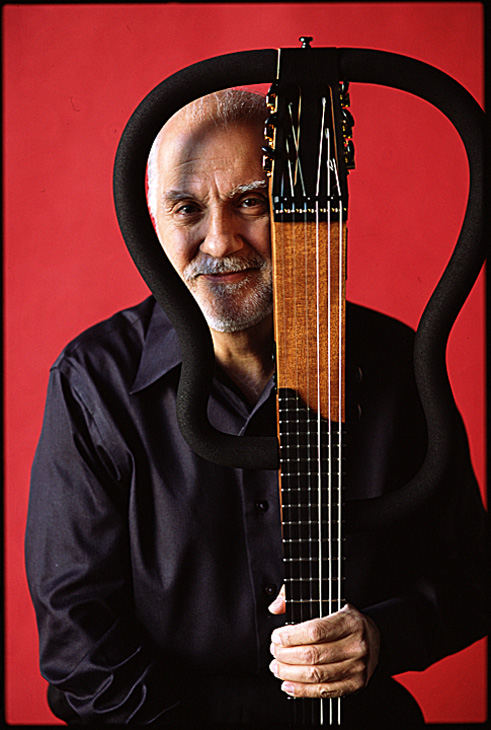
Oscar Castro-Neves is a Brazilian institution as a guitarist and arranger. What I hear is a cat totally open-minded in how he approaches music, perhaps because he has two traditions to draw on. The friction between his native Brazilian tradition and his adopted jazz tradition jumps off sparks in his imagination and he sees, hears and feels possibilities most of us can’t even imagine.
So what happens if you take a stately ballad, such as "Naima" is, and put it atop a percussion-heavy samba stomp? Sounds like a recipe for disaster, doesn’t it? Does it fully work? I don’t know if I would say it works in the sense that I recommend others try it but I know I start swaying every time I hear this version. Actually, in this case, I think “Naima” is used as a sharpening stone, as a foil or an excuse for some heavy, funky samba. I know when the song starts I don’t see how in the world “Naima” is going to fit into that and then the percussion fades out and I say, yeah, I knew that was just to get our attention and then the percussion slowly builds back up and even jumps into a heavy African-American backbeat before switching again to hand percussion and then into a modified samba swing with a Stanely Turrentine-like tenor solo. Call me crazy, but I enjoy a mess like this!
7. Michael Brecker from Herbie Hancock’s Directions in Music: Live At Massey Hall (Umvd – 2002)
I’ll be brief. This is a Herbie Hancock record with a totally solo feature for saxophonist Michael Brecker.
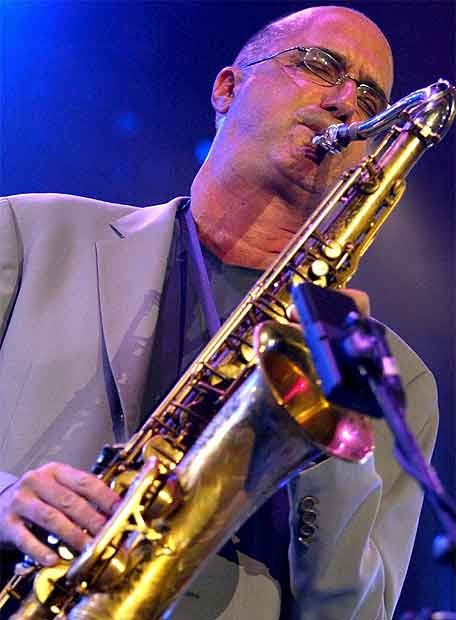
I remember when Brecker was winning best tenor awards from Downbeat magazine. How could that be with Sonny Rollins still active, plus Joe Henderson, David Murray, Wayne Shorter…. You get the idea. My prejudices got the best of me and I said this is crazy, just plain crazy. I never heard anything from Brecker that I would put in the great category. Yeah, he was good. But great? Hey, wait a minute…
This is great! Period. End of discussion.
8. McCoy Tyner from The Greeting (OJC - 1978)
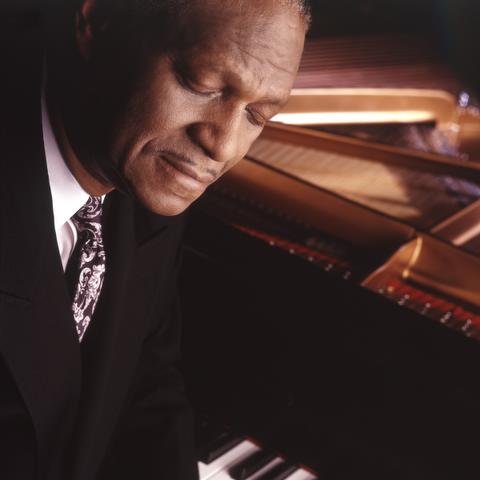
If Brecker is great, McCoy is insanely beyond category. How in the world does he do it? Listen to this improvisation. From thunder and power chords, to wisps of sound and intimate voicings; it’s all there. Everything you ever wanted to hear. I feel like applauding is not enough, I ought to bow down or something. The magnificence of this interpretation staggers me especially given how many times McCoy played the song with Trane and yet here it sounds totally fresh as though he were exploring it for the first time. Is it any wonder why so many pianists were influenced by this man?
9. Mimi Fox from Standards (Origin Records – 2003)
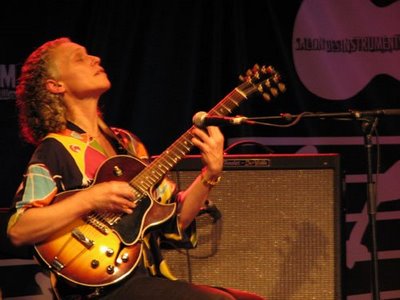
Don’t be like me. Don’t sleep on Mimi Fox. No, it’s not Stanley Jordan. Hell yeah, she can play. This is the real deal. New York born, got into music in her pre-teens. When she was fourteen, she decided to try listening to a real jazz record. By chance she bought Trane’s Giant Steps, and as they say, the rest is history. She’s now a professor at NYU and also Chair of the Guitar Department at the innovative Jazz School in Berkeley, California—how’s that for bi-coastal accomplishments. She’s also a recording and touring artist. The operative word is: artist. Do yourself a favor and get to Mimi Fox.
10. Lonnie Liston Smith from Cosmic Funk (RCA Victor – 2001)
A couple of notes: first, this is an album from back in the day, the golden era of the seventies. Second, although it’s Lonnie Liston’s album, “Naima” is a feature for his younger brother, vocalist and flautist Donald Smith. Donald is also a monster keyboardist. Monster. But that’s another story. There aren’t many vocal versions of “Naima” I enjoy listening to. Jean Carn done spoiled me for all time. But, that said, I do make room for Donald Smith.
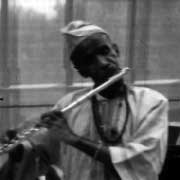
He has the most gorgeous voice of any male vocalist in a long time. His sensitivity in phrasing and dynamics and breath control and on and on are beautiful. Plus, his flute work is first rate. Believe me, if this album is not in your collection, you’ve got a serious hole that’s needs to be filled immediately!
11. John McLaughlin from After The Rain (Polygram – 1995)
I was never a big fan of Miles when he went electric and, as a result, I didn’t follow McLaughlin’s career to closely. I was clear the Englishman could play his ass off but it just wasn’t to my taste. So, to paraphrase a jazz standard, I just chalked it up to: it’s not for me.
Imagine my surprise as I found myself liking this. Will wonders never cease? You will notice that although “Naima” is one of Trane’s most recorded compositions, I only have two tracks that prominently feature saxophone: the Michael Brecker and the Coltrane/Sanders closing track. I don’t count the Dexter Gordon track as “prominently” featuring the sax. Part of my goal was to offer a really wide variety of “Naima” variations that I also liked a lot. So, it had to be something a little different and something I liked a lot. Anyway, McLaughlin makes the cut because they are really into playing the music. That’s Joey De Francesco on organ and Elvin Jones on drums. Shimmering beauty.
P.S. the photo is from an earlier period. That’s not the kind of guitar McLaughlin plays on this album; I just used the pix as a bit of eye candy.
12. John Coltrane from Live at the Village Vanguard Again! (Impulse – 1966)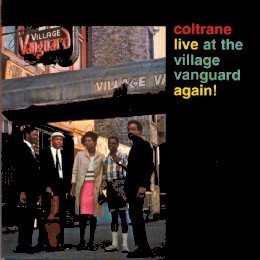
This is the version of “Naima” that I listen to the most. Period. I always come back to this. I’ll try to explain why below but first a word of caution: this is not your ordinary jazz record. If you don’t get it, don’t sweat it. Listen to the other versions.
* * *
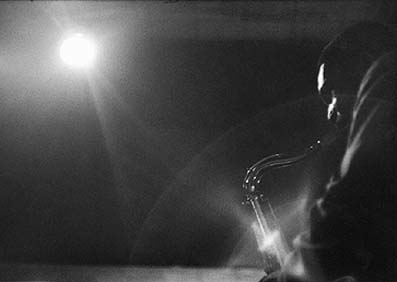
FK: "Yeah < laughs> . ...Another reason I asked you about Malcolm was because -, you know, I've interviewed about a dozen and a half musicians by this time and the consensus seems to be that, especially the younger musicians talk about those kind of political and social issues that Malcolm talked about, when they're with each other, and, some of them say that they try and express this in the music. Do you find that in your own groups or in the musicians you're friendly with that ... these issues are important and you do talk about them?"
JC: "Oh well they're definitely important. And as I said they are - the issues are part... of what IS... you know at this time."
FK: "Do you make..."
JC: "...so naturally as - as musicians we express - what ever - what ever it is."
FK: "Do you make a conscious attempt to express these things or do you feel that it just..."
JC: "Well I'll tell you -- myself... I make a conscious attempt, I think I could say ...in music I make - I make... or have tried to make... consciously, an attempt... to - change... to change what I've found in music, you see. ...And, in other words ...I've tried to say, well, this I feel could be better... you see - in my opinion, so I will try to do this - to make it better. This is what I feel that we feel, in any situation that we find in our lives, when there is something that we feel should be better, we must exert effort to try to make it better. So its the same socially, musically, politically, in any - in any department of your life."
FK: "Most of the musicians I have talked to are very concerned with changing the society and they do see their music as an instrument though which society can be changed."
JC: "I think so. I think music is an instrument -, it can create the - initial, by the thought patterns I think you can create the change, you see... and the thinkin' of the people."
—John Coltrane
[From an interview with John Coltrane by Frank Kofsky.]
* * *
In order to enjoy this style of John Coltrane’s music you have to be opposed to the mainstream American authorities.
The music is not difficult to understand but it is difficult to listen to and at the same time be totally comfortable with the western status quo. Why? Because the basis of this music is that something else exists, something else beautiful and necessary.
Coltrane lost many of his former fans. People would actually walk out. Sometimes—often times—more walked out than walked in. These recordings did not sell as well as Giant Steps or My Favorite Things. Still don’t.
Unless you are totally dedicated to changing the world, you don’t make this kind of music. You can’t. The price is too high. The dues you have to pay. It might not sound like it but you have to play and practice all the time to get to this as a music maker.
You ever been in church and see people catch the spirit. That’s what Trane & Co., were doing: catching the spirit, calling down the spirit.
The great majority of ordinary black people in America (I started just to write “negroes” but thought better because it might be misunderstood and misconstrued), anyway ordinary negroes believe in the spirit world, indeed, many of us visit that world, some of us on a regular basis. It’s not a deeply intellectual trip. In fact, like sister Badu said, most intellectuals… yall know what I’m talking about?
You can’t think your way to this. Even the players of instruments have to find their way emotionally and through faith. They have to believe that it is possible to go beyond what you know and enter into another realm of existence.
Or, to put it in intellectual terms: there is more to the world, to the universe they what we know. Indeed, as I have said in a haiku:
What we know limits
us. Wisdom loves everything
not yet understood.
Pharoah Sanders is quoted as saying that at that point when he was with Trane they were working on some other kind of approaches to making music. They weren’t even thinking about chords.
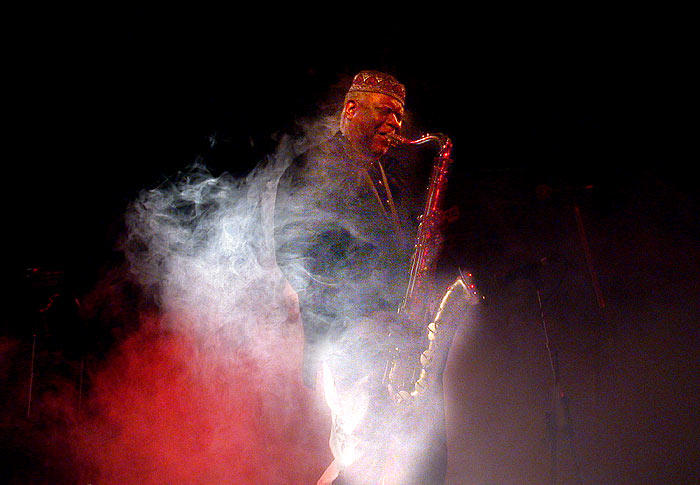
You hear that ghostly flutter tonguing when Pharoah comes in for his solo? Not just the screaming sounds. The tones. The moans. Like a million enslaved Africans rising up at midnight. But not just that. The eerie tonal sounds that Sanders pushes through the metal when he breaths on it. Think on that. Sanders breathes on a piece of metal and a bamboo reed and makes the combination of organic (reed) and inorganic (metal body of the horn) sound like a spirit.
A lot of times, most of us don’t want to get this serious about listening to music. We don’t want to have to change the way we think and behave in order to enjoy a record. We want to have fun. Or to relax. This shit is exhausting. It’s work listening to this. When it is over, you’re through. Spent. Need to rest. Catch your breath a minute.
Rather than acclimate you to what is, this music pushes you toward thinking about and becoming one with what isn’t.
Some people go to church and never catch the spirit. When I went, I didn’t. But I still believed because I saw what the spirit did to others.
The music is my religion, or more profoundly the music of my people is my religion. The sounds we make when we be ourselves but at the same time be something other than what we have been forced, induced, bribed, convinced, brainwashed, something other than whatever we are right now. The sounds of former Africans, captured and transported to another world, a new world, the sound of us thinking about be/ing, be/coming something other than what we are, what we became after we got here, hell, something other than what we were before we got here, cause being here ain’t been all bad. It’s just the price of the ticket been high, very high, very, very high. It costs us our lives to live here. Think about it.
Think about being as dedicated to something productive as these musicians were to making their music.
Think about moving past whatever addictions we have. John Coltrane was addicted to heroin. And alcohol. He kicked but it caught up with him. His liver gave out. Yet, before he had to go, he did something meaningful with his life. Think about making a meaningful contribution to humanity. Think about doing something so profound that forty some years after you have made your transition people would still be inspired by what you did, still be studying what you did, still be marveling at the beauty of what you did.
Think about doing something significant to/for future generations. Think about making your life that profound.
Now move beyond a thought. Be/come profound. Be/come a force for real good, for positive change. Believe. Have the faith in yourself that will fuel your efforts at being something more, something better than you already are.
That’s what Coltrane was about. That’s what we all can be about. That is what this music is telling us.
Ashe.
—Kalamu ya Salaam
Classic. Of course.
Doug & Jean - Impeccable.
Dexter Gordon - Not feeling it.
Turtle Island - Definitely interesting but I'm still undecided.
SFJC - Much better than I expected.
Soul Bossa Trio - Great. I love it. Just suprised Kalamu would pick a record like this one.
Oscar Castro-Neves - Kalamu got it right: to be enjoyed, but hopefully not imitated.
Brecker (Hancock) - I hear that I should like it, but I don't.
McCoy - McCoy doesn't play in notes, he plays in waves. But for a non-jazz fan like me, this one, like the Brecker, is more impressive than enjoyable.
Mimi Fox - Feeling it all the way down to my bones and from the first note. Fantastic.
Lonnie Liston - Hits me right in my soft spot. I'll take it.
McLaughlin - Until the end, it's almost not there. Spooky and ethereal.
'Trane live - Classic. Of course. (And yes, the solos are out there a minute.)
And Baba, I have to beg to differ on one point. You don't have to be opposed or in support of anything to dig 'Trane's music. Even some of the later stuff. I guarantee you there's some hardcore Republicans somewhere in this country who are loving the status quo and getting lifted off of "Om" at the same time. I used to work in a record store - I met 'em all the time.
—Mtume ya Salaam
This entry was posted on Monday, May 12th, 2008 at 4:18 am and is filed under Cover. You can follow any responses to this entry through the RSS 2.0 feed. You can leave a response, or trackback from your own site.
2 Responses to “DOUG & JEAN CARN / “Naima””
September 8th, 2008 at 4:06 pm
Very nice, thank you. Coltrane can be difficult to listen to. Sometimes he is to jarring esp., I find, in earlier works like ‘Giant Steps’. For me, I can listen to ‘Naima’ and ‘A Love Supreme’ anytime and it speaks to me.
White, but no Republican.
December 27th, 2018 at 12:23 am
Pretty! This was an extremely wonderful article.
Thanks for supplying this information.
Leave a Reply
| top |
